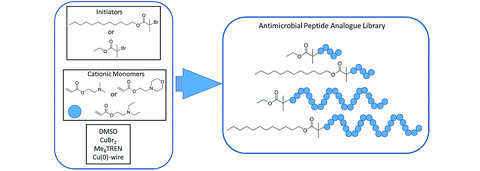Epigenetics, a field that explores heritable changes in gene expression without alterations in the DNA sequence, has rapidly gained attention in drug discovery. Epigenetic modifications play vital roles in various biological processes and have been linked to numerous diseases, including cancer, neurological disorders, and autoimmune disorders. Assembling a focused set of small molecule modulators targeting epigenetic targets opens up possibilities for the development of novel therapies. In this article, we will discuss the concept of an Epigenetics Focused Set and elaborate on strategies to assemble small molecule modulators for epigenetic target families.
Epigenetics Focused Set: Understanding the Concept
An Epigenetics Focused Set represents a collection of small molecule modulators specifically designed to target key components of epigenetic regulatory pathways. These pathways involve enzymes, proteins, or other molecules responsible for modifying DNA or histones, ultimately leading to changes in gene expression. The selection of targets within the Epigenetics Focused Set is based on their relevance to specific diseases or biological processes associated with epigenetic dysregulation.
Assembling Small Molecule Modulators for Epigenetic Target Families:
The process of assembling small molecule modulators for epigenetic target families involves several key steps, including target identification, compound design, synthesis, and characterization. Here are some strategies commonly employed in this process:
Target Identification:
Identifying suitable targets within the epigenetic regulatory pathways is the initial step. This involves a comprehensive understanding of the epigenetic mechanisms associated with the disease of interest. Targets may include DNA methyltransferases (DNMTs), histone deacetylases (HDACs), histone methyltransferases (HMTs), or other components involved in epigenetic modifications.
Virtual Screening and In Silico Design:
Computational approaches, such as virtual screening and in silico design, aid in the identification and design of potential small molecule modulators. Virtual screening involves the rapid screening of large compound libraries to identify molecular scaffolds that may interact with the target of interest. In silico design utilizes computer-based methods to predict and optimize the binding affinity and selectivity of these compounds.
Compound Synthesis and Optimization:
The identified hits from virtual screening are synthesized, and their biological activity is evaluated. Structure-activity relationship (SAR) studies are conducted to modify the lead compounds, optimizing their potency, selectivity, and pharmacokinetic profile. Medicinal chemistry approaches, such as modification of chemical groups, exploration of different analogs, or introduction of stereochemistry, are employed to enhance compound properties.
Assay Development and Screening:
Assay development is crucial for evaluating the biological activity of the assembled small molecule modulators. These assays may involve measuring the inhibition/enhancement of enzyme activity, the binding affinity to specific epigenetic targets, or their impact on gene expression. High-throughput screening (HTS) can be utilized for screening large compound libraries against the identified epigenetic targets.
Characterization and Lead Optimization:
The promising small molecule modulators identified through screening are further characterized for their physicochemical properties, solubility, stability, and selectivity. Lead optimization involves iterative cycles of structural modifications to improve drug-like properties, efficacy, and safety profiles. This process may also include in vitro and in vivo studies to assess the pharmacokinetics and pharmacodynamics of the lead molecules.
Challenges and Future Directions:
Assembling small molecule modulators for epigenetic target families poses several challenges. Epigenetic targets often have complex binding sites and require compounds capable of interacting with them specifically. Achieving high selectivity while minimizing off-target effects remains a critical challenge. Furthermore, the development of molecules with good pharmacokinetic properties, including bioavailability and cell permeability, is crucial for successful translation into viable therapeutic agents.
Future directions in assembling small molecule modulators for epigenetic target families involve exploring new chemical space, employing innovative screening technologies, and integrating multi-disciplinary approaches. The growing understanding of epigenetic mechanisms and the discovery of new targets will continue to expand the possibilities in this field, leading to the development of novel therapies with potential applications across various diseases.



